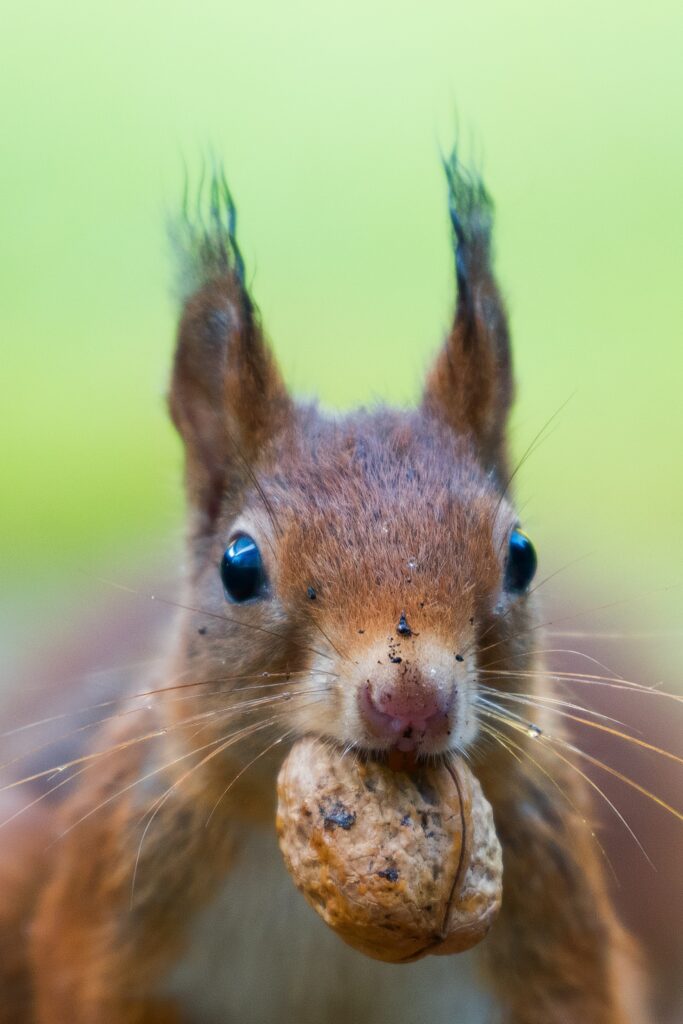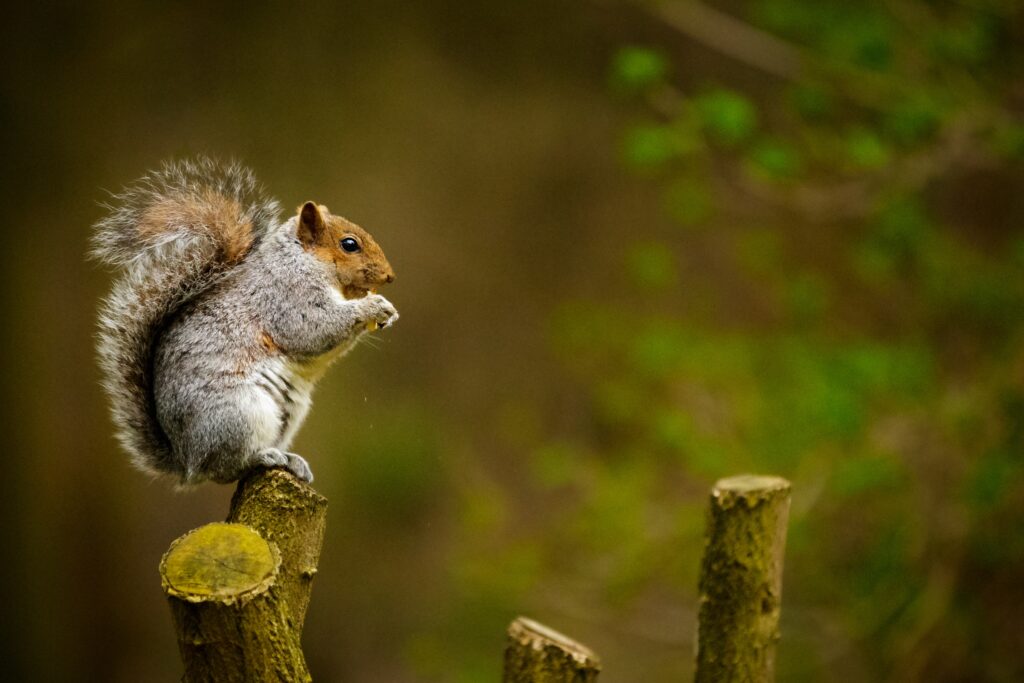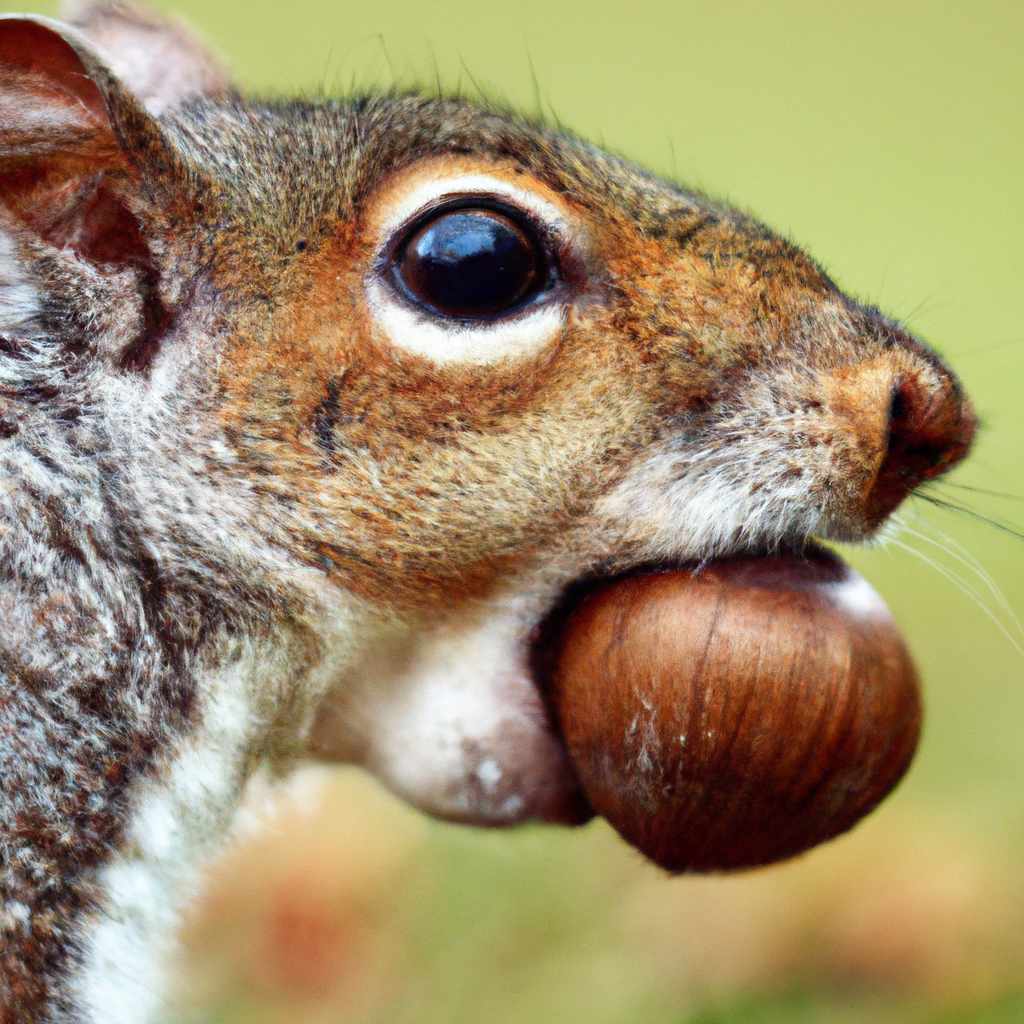If you’re ever in a survival situation or simply curious about trying something different, you may find yourself contemplating whether squirrels are safe to eat. Well, fret not, because in this article, we’ll explore some practical tips on how to easily determine if a squirrel is safe for consumption.
From examining its appearance to understanding its habitat and behavior, we’ll provide you with valuable insights to ensure that your squirrel meal is not only delicious but also safe. So let’s dive right into the fascinating world of squirrel foraging and discover how to tell if a squirrel is safe to eat.
1. Physical Appearance
Squirrels are known for their distinct physical appearance, characterized by their fur, size, and health indicators.
1.1 Color and Texture of Fur
Squirrels typically have fur that varies in color depending on the species. Common colors include brown, gray, and red. The texture of their fur is usually soft and dense, providing insulation against cold weather.
1.2 Size and Weight
The size and weight of squirrels can vary depending on the species. On average, squirrels range from 7 inches to 20 inches in length, including their tail. Their weight can range from a few ounces to over a pound, with some larger species weighing up to 2 pounds.
1.3 Health Indicators
When considering whether a squirrel is safe to eat, it is important to evaluate its health indicators. Look for signs of malnutrition, such as thinness or muscle wasting. Healthy squirrels should have clear and bright eyes, a glossy coat, and active movements. Avoid squirrels that appear sickly, injured, or show signs of disease.
2. Behavioral Observations
Observing the behavior of squirrels can provide insights into their overall well-being and suitability for consumption.
2.1 Normal Activity Levels
Healthy squirrels exhibit high levels of activity, frequently moving around their environment. They are agile climbers and can be seen scurrying up trees and leaping from branch to branch. If a squirrel appears lethargic or sluggish, it may be an indication of illness.
2.2 Emotional State
While it can be challenging to determine the emotional state of a squirrel, observing their behaviors can offer some clues. Healthy squirrels are generally alert, curious, and exhibit exploratory behaviors. If a squirrel displays excessive fear, aggression, or abnormal behavior, it may be a sign of distress or illness.
2.3 Interaction with Other Squirrels
Squirrels are social creatures and often interact with others of their kind. Paying attention to their interactions can provide insight into their well-being. Healthy squirrels engage in playful activities, grooming, and social interactions. Be cautious of squirrels that appear isolated or exhibit aggressive behaviors towards other squirrels, as this may indicate potential health issues.

3. Feeding Habits and Food Sources
Understanding the feeding habits and food sources of squirrels is crucial in determining their safety for consumption.
3.1 Natural Diet
Squirrels have an omnivorous diet, consisting of nuts, seeds, fruits, vegetables, insects, and sometimes small vertebrates. The specific diet can vary depending on the species and the availability of food sources in their habitat. It is important to consider the natural diet of squirrels when planning to consume them.
3.2 Foraging Behavior
Squirrels are known for their foraging behavior, where they search for and collect food. They have a keen sense of smell and are adept at locating and storing food for later consumption. Healthy squirrels exhibit effective foraging behavior, regularly finding and consuming a variety of food sources.
3.3 Contamination Risks
When considering the safety of consuming squirrels, it is essential to be aware of potential contamination risks. Squirrels can come into contact with harmful substances, such as pesticides or pollutants, which may accumulate in their bodies. Additionally, improper food storage and handling practices can lead to bacterial contamination. Ensure that squirrels intended for consumption are sourced from clean and uncontaminated environments.
4. Environmental Considerations
The environment in which squirrels live plays an important role in their safety for consumption.
4.1 Habitat Assessment
Squirrels inhabit a range of environments, including both urban areas and wilderness settings. It is important to consider the specific habitat in which the squirrel was found. Squirrels living in urban areas may be exposed to more pollutants and toxins, while those in wilderness settings may have a more natural and uncontaminated diet.
4.2 Pollution and Toxins
Urban squirrels are more likely to encounter pollution and toxins due to their proximity to human activities. This can include exposure to vehicle exhaust fumes, chemical pollutants, and waste products. These factors may contribute to an increased risk of contamination in urban squirrels compared to those in less polluted environments.
4.3 Urban Squirrels vs. Wilderness Squirrels
In general, squirrels living in wilderness settings have access to a more diverse and natural food supply, which can contribute to their overall health and safety for consumption. However, it is essential to consider specific factors such as pollution, pesticides, and local environmental conditions when assessing the suitability of squirrels for consumption, regardless of their habitat.

5. Disease and Parasite Evaluation
Squirrels, like any other animal, can carry diseases and parasites that may pose risks to human health.
5.1 Common Squirrel Diseases
Squirrels can carry various diseases, including leptospirosis, salmonellosis, and tularemia. These diseases can be transmitted to humans through direct contact with infected squirrels or their bodily fluids. It is essential to ensure that the squirrel is free from any known diseases before considering it safe for consumption.
5.2 External Parasites
Squirrels may harbor external parasites, such as fleas, ticks, and mites. These parasites can pose risks to human health and should be removed before consuming the squirrel. Thoroughly inspect the squirrel’s fur for any signs of external parasites and take appropriate measures to eliminate them.
5.3 Internal Parasites
Internal parasites, such as roundworms and tapeworms, can also be present in squirrels. These parasites can cause health issues in humans if consumed. Proper cooking techniques and thorough inspection of the squirrel’s organs can help minimize the risk of internal parasite transmission.
6. Legal Regulations and Hunting Guidelines
Before considering hunting or consuming squirrels, it is crucial to understand the legal regulations and guidelines in your specific area.
6.1 Local Hunting Laws
Different regions and countries have specific laws and regulations regarding hunting squirrels. These laws may dictate hunting seasons, bag limits, and the use of hunting methods. Familiarize yourself with the local hunting laws and ensure compliance to avoid legal repercussions.
6.2 Seasonal Restrictions
Many jurisdictions enforce seasonal restrictions on hunting squirrels to protect their populations during breeding or nesting periods. It is essential to know the specific hunting seasons and adhere to these restrictions to conserve the squirrel population and maintain ecological balance.
6.3 Licensing and Permits
Some areas require hunters to obtain licenses or permits before hunting squirrels. These licenses may involve specific fees and prerequisites, such as completing hunter education courses. Ensure that you have the necessary licenses or permits according to your local regulations to engage in legal hunting activities.

7. Preparation and Cooking
If you have decided to consume squirrels, it is crucial to follow proper cleaning, dressing, and cooking methods to ensure food safety.
7.1 Proper Cleaning and Dressing
Before cooking, it is necessary to thoroughly clean and dress the squirrel. Remove the fur, internal organs, and any visible fat. Properly clean the carcass with water and ensure that all hair and debris are removed. Pay particular attention to hygiene practices during the cleaning and dressing process to prevent cross-contamination.
7.2 Cooking Methods
Cooking squirrels to a safe internal temperature is essential to kill any potential bacteria or parasites. Popular cooking methods include roasting, grilling, or stewing. Ensure that the meat reaches an internal temperature of at least 165°F (74°C) to ensure food safety.
7.3 Safety Precautions
When handling and preparing squirrels for cooking, it is important to follow basic food safety practices. Keep raw and cooked meat separate to prevent cross-contamination. Thoroughly clean all utensils and surfaces used during preparation. Wash hands frequently with soap and water, particularly after handling raw squirrel meat.
8. Cultural Considerations
Cultural considerations surrounding the consumption of squirrels can vary across different regions and communities.
8.1 Traditions and Beliefs
Squirrels may hold cultural significance in some communities, influencing their beliefs and traditions regarding their consumption. It is important to respect and understand these cultural perspectives when engaging in discussions or practices related to squirrel consumption.
8.2 Regional Cuisine
Squirrel meat is incorporated into various regional cuisines around the world. From stews to pies, different cultures have developed unique recipes that highlight the flavors and textures of squirrel meat. Exploring regional squirrel cuisine can provide insights into diverse culinary traditions.
8.3 Ethical Dilemmas
The consumption of squirrels raises ethical dilemmas for some individuals. Some may feel uncomfortable hunting or consuming these animals due to personal beliefs or concerns about animal welfare. Respect differing opinions and engage in open discussions surrounding the ethical implications of consuming squirrel meat.

9. Resources and Expert Opinions
Seeking advice from experts and accessing reliable resources can provide valuable insights when considering the safety of consuming squirrels.
9.1 Expert Advice
Consulting with wildlife experts or local authorities can offer expert advice regarding the suitability of consuming squirrels. They can provide information on local disease prevalence, environmental risks, and hunting guidelines specific to your area.
9.2 Organizations and Guides
Several organizations and guidebooks focus on hunting, food safety, and wildlife management. These resources can provide comprehensive information on squirrel consumption, including tips on hunting techniques, preparation, and cooking methods.
9.3 Online Communities
Engaging with online communities dedicated to hunting and cooking can offer a wealth of knowledge from experienced individuals. Discussion forums and social media groups provide a platform to share experiences, ask questions, and learn from others who have experience with squirrel consumption.
10. Conclusion
Determining the safety and suitability of consuming squirrels involves considering various factors, including their physical appearance, behavior, feeding habits, environmental considerations, disease risks, legal regulations, and cultural perspectives.
By assessing these aspects and following proper preparation and cooking methods, you can make informed decisions about the consumption of squirrel meat. Remember to prioritize food safety, respect local laws and regulations, and engage in open discussions regarding ethical considerations surrounding squirrel consumption.

